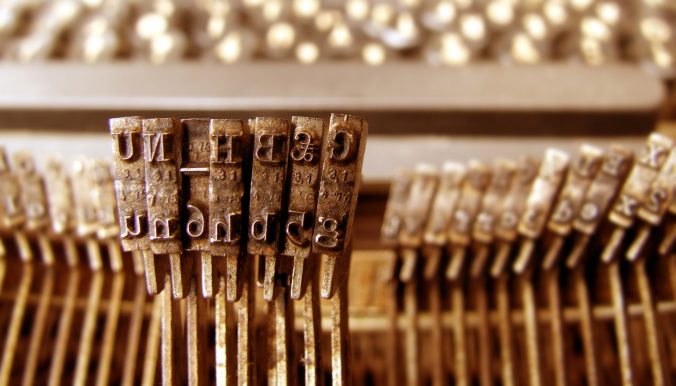Two writing-adjacent topics collided on my Twitter timeline this week, and lo, a post was born.
I’m going to hit them in reverse order. Bear with me; it’ll make sense by the end.
Twitter user Séan Richardson wanted to know what font people used for writing. As you can see, I answered:
Times New Roman 10/12 because choosing another font just gives me one more excuse to procrastinate. TNR is like “said” as a dialogue tag: functional, and functionally invisible. https://t.co/8SMwiWONHP
— Elspeth Cooper (@ElspethCooper) January 28, 2020
I felt like I needed more room than just a tweet to explain a bit further, which is one reason for this post. Before I get into it, what I’m talking about here is me and my process, i.e. what works for me; it won’t necessarily work for anyone else.
I do my writing in Times New Roman, 12 point. Boooooring, right? Well, that’s kind of the point. Times is old. It’s inoffensive, it’s readable (that’s why newspapers use serif fonts, after all), it’s *everywhere*. There’s nothing about it that stands out, so the eye kind of slips over it, sending the words straight into your brain without stopping to admire that stunning capital W or the cute descender on the g.
Times is the visual equivalent of the dialogue tag “said.” I’m sure as kids we all had English teachers who encouraged us to strive for variety in our expostulations and ejaculations; I am equally sure we’ve all had the same conversation with a kindly editor who assured us that yes really, just “said” is fine, and even encouraged because the reader is effectively blind to it. It doesn’t interrupt the eye’s flow over the text the way some of those other ten-dollar words do.
Times New Roman, 12 point. Boooooring, right? Well, that’s kind of the point.
So because Times is so commonplace, it makes the perfect drafting tool for me. What I’m typing just goes straight into my visual cortex without any sightseeing on the way. I don’t want to be distracted by a comely Calibri or tempting Tahoma. Don’t get me wrong, I like those fonts, I do. I sometimes use them for correspondence – they’re pretty! But for the grunt work of getting the words on the page, it’s the staid, reliable Times every time.
There is a corollary to this, of course. Sitting down to choose another, more visually appealing font would be a further excuse to procrastinate, and Lord knows I don’t need any more of them!
And so we come to the second topic: the font Comic Sans.
I have, shall we say, an uneasy relationship with Comic Sans
Someone in the replies to my tweet asked whether I’d ever tried the tip about drafting in Comic Sans. There’s been much chatter on writer-Twitter recently about this idea, which supposedly makes drafting easier/quicker. A few people on my timeline have tried it, and say that it works for them. Naturally, I would be interested in trying this myself (for SCIENCE!) but I have, shall we say, an uneasy relationship with Comic Sans (Story time: way back in the dark ages, when I still had a day job, the managing director decided to launch a sister company and designed new branding for it. Gentle Reader, he chose Comic Sans as the font. It was on our business cards. It was on our company letterhead. That was . . . a dark time. I try not to think about it).
Anyway. People have theories about why drafting-in-Comic works. They say it’s a fun, playful font. It encourages you to write more freely, to take chances. Personally, I think the effectiveness of it is less to do with Comic Sans per se, and more to do with it being a font you don’t normally use.
Let me explain. There’s a piece of writing advice that recommends that you do your final proofread in a different font, because it makes you see the words afresh, allowing you to pick up on errors your eye would otherwise skip over. This is much the same reason I have been proofreading on my Kindle for years: it makes me see what is actually there, instead of what I’m so accustomed to seeing I’ve become blind to it.
So will I be trying “this one weird trick” to see if it improves the drafting process? Possibly, but I very much doubt the font I choose will be Comic Sans. The twitching has only just stopped.
Featured image: Free photo 6228716 © Janaka Dharmasena – Dreamstime.com







